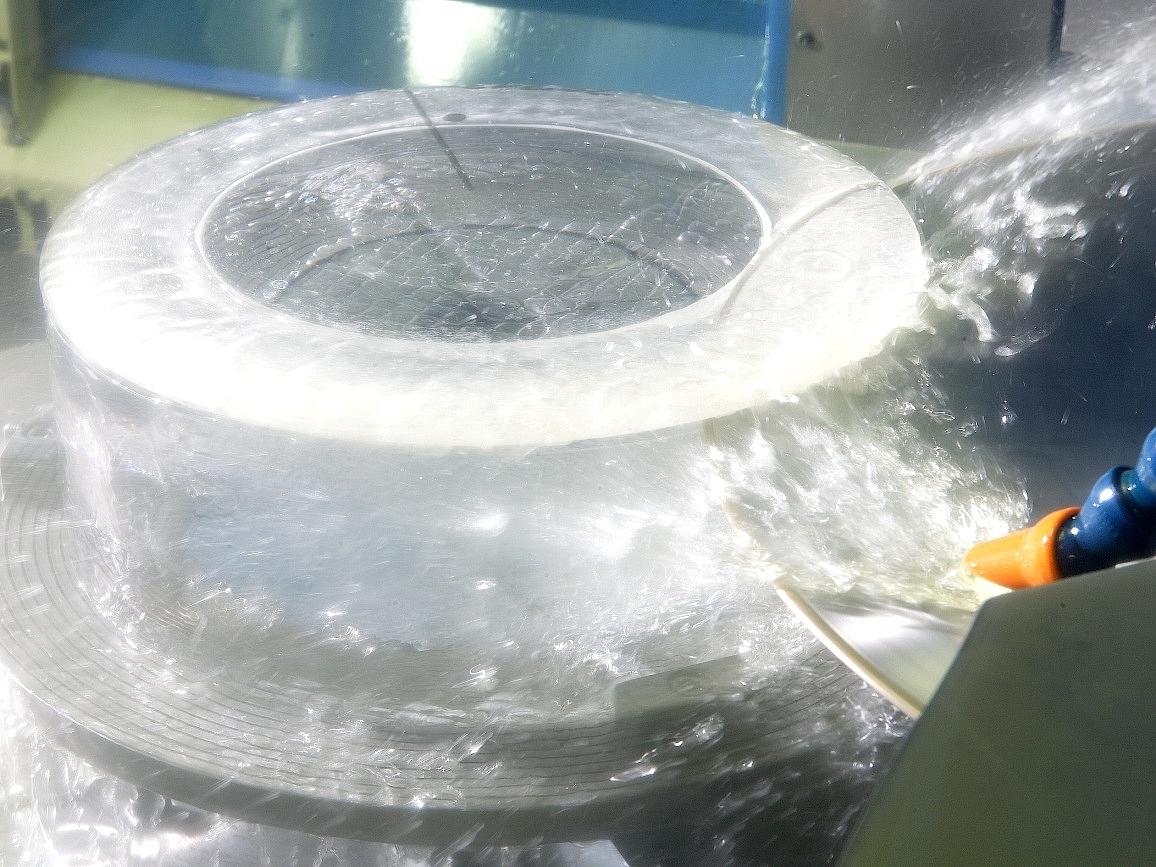Processing fused quartz and fused silica is similar to any other glass and is generally done by:
- Mechanical processing
- Hot forming
The following is some general information regarding these processes and what is specific to fused silica.
Mechanical processing
Due to its hardness, fused silica requires diamond tools to process it mechanically. However because it is fragile, there is a limit to the force it can withstand before cracking. As a result the feed speed during processing must be chosen carefully.
The general processes incude:
- Cutting:
Typically, fused silica is cut using band and wire saws as well as chop saws. The cut loss and surface quality depends on the machine and the feed speed.
It is also possible to cut fused silica using CO2-Lasers or a water jet machine. While a laser produces flame-glazed surfaces, a water jet produces a rougher surface. If the thickness of the fused silica is too large for a single cut with a laser, it may be possible to do multiple consecutive cuts. After a laser cut it is necessary to anneal the glass piece to relieve thermally induced stress and keep the part from shattering.
Both a laser and a water jet allow the manufacturing of fused silica plates of simple or complex contours
- Drilling:
Diamond drills can produce holes in small rods of fused silica. It is important to ensure proper cooling to prevent the tools from failing prematurely. For thin pieces of fused silica, e.g. in plates, it may be easiest to use a laser to drill holes.
- Grinding
- Milling
Hot forming
A lot of experience is necessary to do hot forming of fused silica. Due to the high melting point and its steep viscosity, the processing temperature range is rather narrow. If the temperature is too low, fused silica is solid, if it is too high, it gets very soft, almost liquid, and it evaporates to form soot dust.
Additionally hot processing fused silica requires an annealing step, or multiple intermediate annealing steps, to relieve thermal stress. If not done correctly, fracturing of the glass can happen any time.
- Welding:
Welding can join two components of fused silica. It is important to heat the two components and keep the temperature high enough to avoid a critical level of thermal stress. A small rod of fused silica, a welding rod, is melted locally in order to fill the gap between the two glass components. Once the melt seam is done, or for large parts in multiple sections, the part needs to be annealed to relieve thermal stress.
- Glass blowing
- Elongation/compression
- Collapsing:
Typically, heating a tube locally to the softening temperature and a lower pressure applying to the inside reduces the tube diameter. The process is frequently employed in fiber optic production to collapse the cladding onto the core rod.
In its extreme form, the process is able to yield rods, from a tube. This typically is the case in CVD processing.
Other
- Etching

